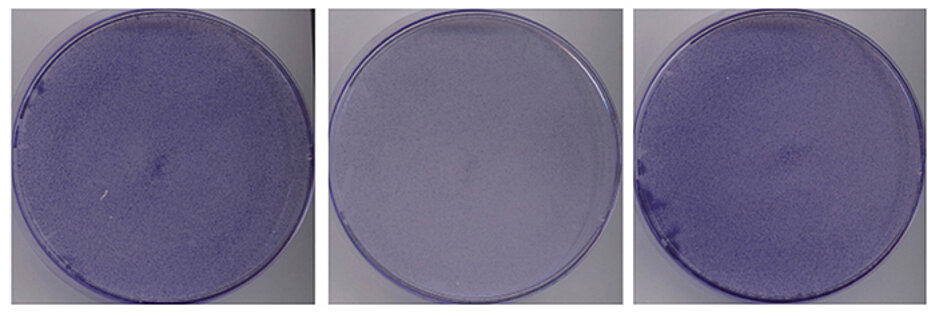Are tumor cells glutamine addicts?
04/13/2017Many tumors are thought to depend on glutamine, suggesting glutamine deprivation as therapeutic approach, but a new study shows that this effect might have been overestimated.

Most cancers require large amounts of glutamine for rapid growth and there are numerous studies indicating that they cannot survive without it, a phenomenon termed “glutamine addiction”. This has fueled the idea that preventing tumors from glutamine uptake could be a potential therapeutic strategy.
A study by researchers from Berlin and Würzburg, Germany, now concludes that while glutamine deprivation will halt the proliferation of certain tumor cells, most of them will not be killed, raising questions of whether such a therapeutic intervention will lead to remission in cancers. The study is published in The EMBO Journal.
Carcinoma cells with high innate levels of c-MYC
Glutamine addiction has often been studied in cell culture systems that are genetically altered to overproduce c-MYC, a central regulator of growth and proliferation in all cells that is frequently de-regulated in cancers. Glutamine deprivation in these systems has been shown to be lethal to the cells – but does this also apply to naturally occurring tumors?
To address this question, the research teams from Berlin and Würzburg took a closer look at human colon carcinoma cell lines that innately show high levels of c-MYC. They found that these carcinoma cells do not die when glutamine is deprived, but rather enter a reversible state of proliferation arrest.
Moreover, the researchers discovered that cell culture systems that express excess c-MYC and naturally occurring colon carcinoma cells differ in the way c-MYC production is regulated. In the cell culture systems, c-MYC protein will always be at a high level. In contrast, c-MYC-levels in colon carcinoma cells are down-regulated upon glutamine deprivation. This suggested that c-MYC may be involved in killing the cells upon glutamine deprivation. The researchers thus investigated the exact role of c-MYC and how it is regulated by glutamine.
Glutamine is used in many cellular pathways, including for the making of nucleotides, the building blocks of DNA and RNA. When glutamine is low, the level of nucleotides will drop. The researchers found that this, in turn, causes c-MYC levels to fall as well.
A key function of c-MYC is to regulate the transcription of numerous genes. Thus, when nucleotide levels are low and c-MYC concentration drops, transcription will be down-regulated as well. “Our results indicate that c-MYC couples transcription to nucleotide availability,” said Stefan Kempa of the Max-Delbrück-Center for Molecular Medicine in Berlin, one of the lead investigators of the study. “It makes perfect sense for the cell to have such a mechanism and not even try to produce RNA when its building blocks are lacking.”
However, this coupling does not exist in cell culture models with exogenously expressed c-MYC – the type of systems that are mainly used to investigate glutamine addiction in cancer. In these cells, the transcription machinery will keep running upon glutamine deprivation, despite the fact that there are too few nucleotides.
This can lead to errors; newly emerging transcripts will get tangled up, forming loops that are lethal to the cell. “The fact that glutamine addiction has mainly been investigated in cell culture systems may have overestimated the lethality of glutamine deprivation,” said Martin Eilers, University of Würzburg, who led the study together with Kempa.
Publication
“The MYC mRNA 3′‐UTR couples RNA polymerase II function to glutamine and ribonucleotide levels”, Francesca R. Dejure, Nadine Royla, Steffi Herold, Jacqueline Kalb, Susanne Walz, Carsten P. Ade, Guido Mastrobuoni, Jens Vanselow, Andreas Schlosser, Elmar Wolf, Stefan Kempa and Martin Eilers, EMBO Journal, 13. April 2017, doi: 10.15252/embj.201796662






